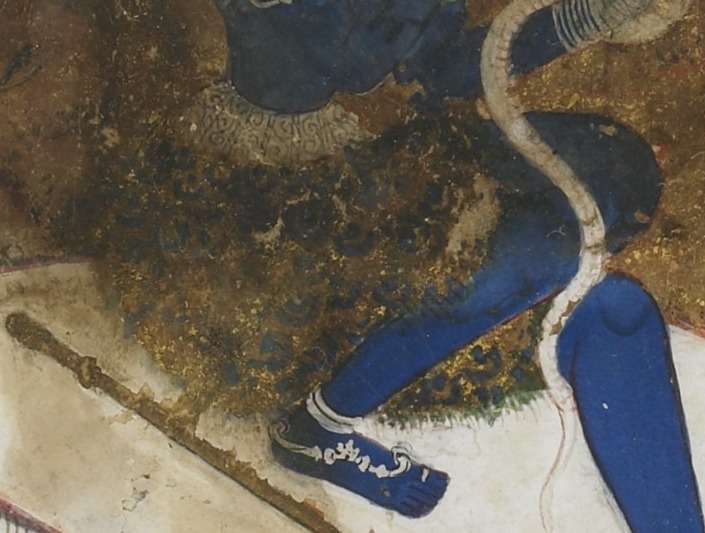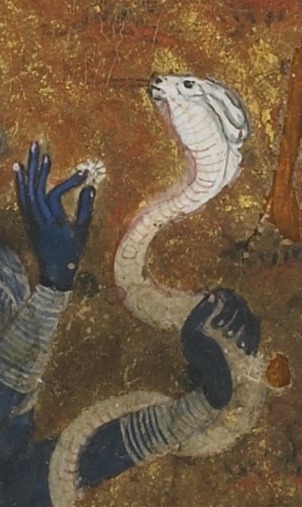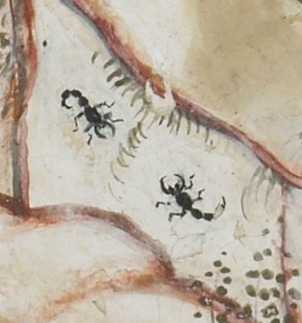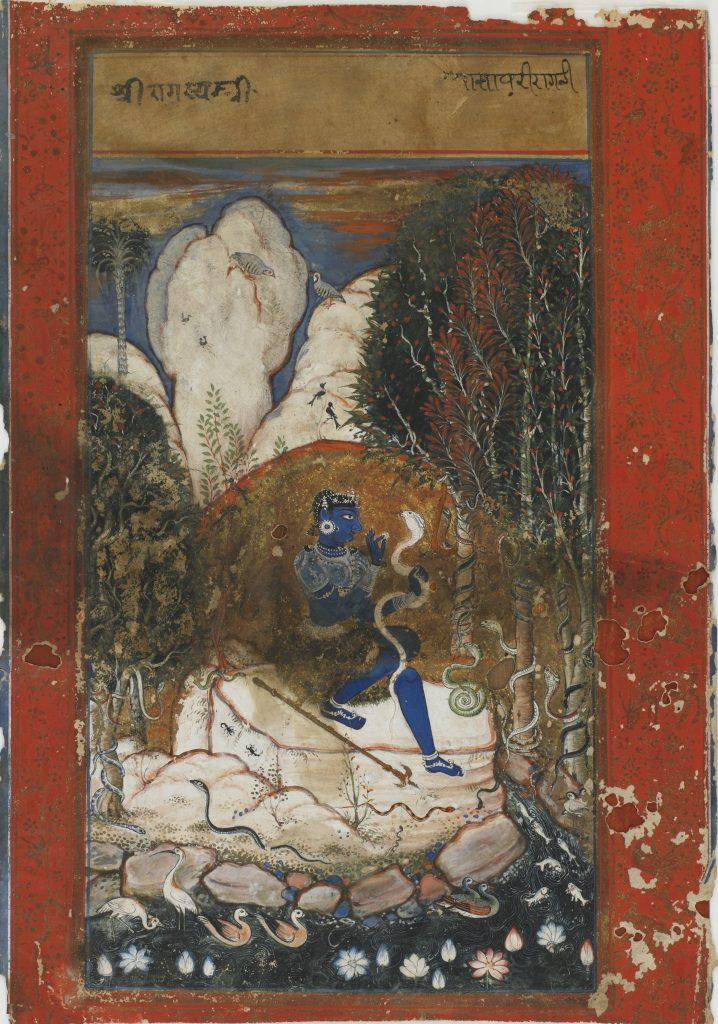Asavari Ragini
Asavari Ragini
By Shaykh Husain, Shaykh Ali and Shaykh Hatim
India, Uttar Pradesh, Chunar, dated 1591
Opaque watercolor and gold on paper
Courtesy the Freer Gallery of Art, Smithsonian Institution, Washington, D.C.: Purchase — Charles Lang Freer Endowment, F1985.3
As a musical mode, Asavari Ragini is meant to convey dignity, serious desire, and longing. In ragamala painting, Asavari Ragini is represented as a solitary woman outdoors, charming a snake. However, individual artists have created different interpretations of the mood (bhava) evoked by this ragini. This is evident by differences in iconography among Asavari Ragini paintings from different courts, geographic regions, and time periods. Although the paintings always depict a woman charming a snake, the identity and social status of the woman varies. These differences in artistic representation present variations on the same mood, which are appreciated by informed and knowledgeable viewers.
This Asavari Ragini painting was made for the Rao Raja Singh, the ruler of the kingdom of Bundi, when he served as governor in Chunar, Uttar Pradesh, in Northern India in 1591. The painting depicts the ragini is as a mesmerizing ascetic woman in the woods. Her skin is blue, indicating a dark complexion. She is depicted as an ideal female beauty, with large almond-shaped eyes, and adorned with necklaces, earrings, bracelets, and anklets. Although adorned with fine jewelry, her skirt made of peacock feathers reveals that, despite her finery, she is a being of the wilderness. The image depicts the woman as a spiritually enlightened ascetic whose magical powers allow her to charm snakes and other dangerous creatures.

The woman’s clothes are made from natural materials, reflecting the environment in which she lives and her distance from the domestic world. The peacock feather skirt indicates that she is an ascetic who has chosen to live isolated in the forest.
The woman holds a white cobra in her left hand. Even with her weapon resting at her side, she controls the snake with her metaphysical strength. The magical powers she possesses, indicated by the white paint stokes radiating from her fingertips, transfix the serpent. Dozens of snakes encircle the woman, fish swim and birds flock to her, and two scorpions fight on a nearby rock, close to her abandoned spear. All of the animals surrounding her are in pairs, emphasizing her singularity. The woman’s combination of beauty and magical abilities make her simultaneously alluring and intimidating. The painting thus evokes the mood of longing through enticement and danger, in which the viewer – in particular the courtly male viewer – is awestruck, both enchanted by her physical beauty and fearful of her mystical powers.

The woman has so charmed and calmed the snake that she is able to control it with only her hands, from which she feeds it a small morsel. This gesture indicates the potency of her mystical abilities.
Some scholars identify the woman in the Asavari Ragini as a yogini. In this context, yoginis are described as “avid female practitioners of yoga who develop mysterious magical powers, such as the ability to tame serpents.” While there may be speculation as to whether the woman is meant to be depicted as an enlightened yogini or simply an ascetic, yogini temples and associated cults flourished in Uttar Pradesh throughout the 8th to 12th centuries. Although painted centuries later, there was a tradition of yoginis in the region where this painting was created, so it is possible that the artist was aware of and perhaps referenced that imagery. Despite any potential regional connection, the powerful female ascetics central to depictions of Asavari Ragini are often equated with yoginis because they are seen as magical, mysterious, powerful, while still embodying ideal female beauty. This identification as yogini further contributes to the mood of allure and intimidation.

Two scorpions fight on the rock below her feet. The poisonous pair of arachnids allude to the woman’s fierce and fearless nature. Although she is mesmerizingly beautiful, she is also wild and threatening.
